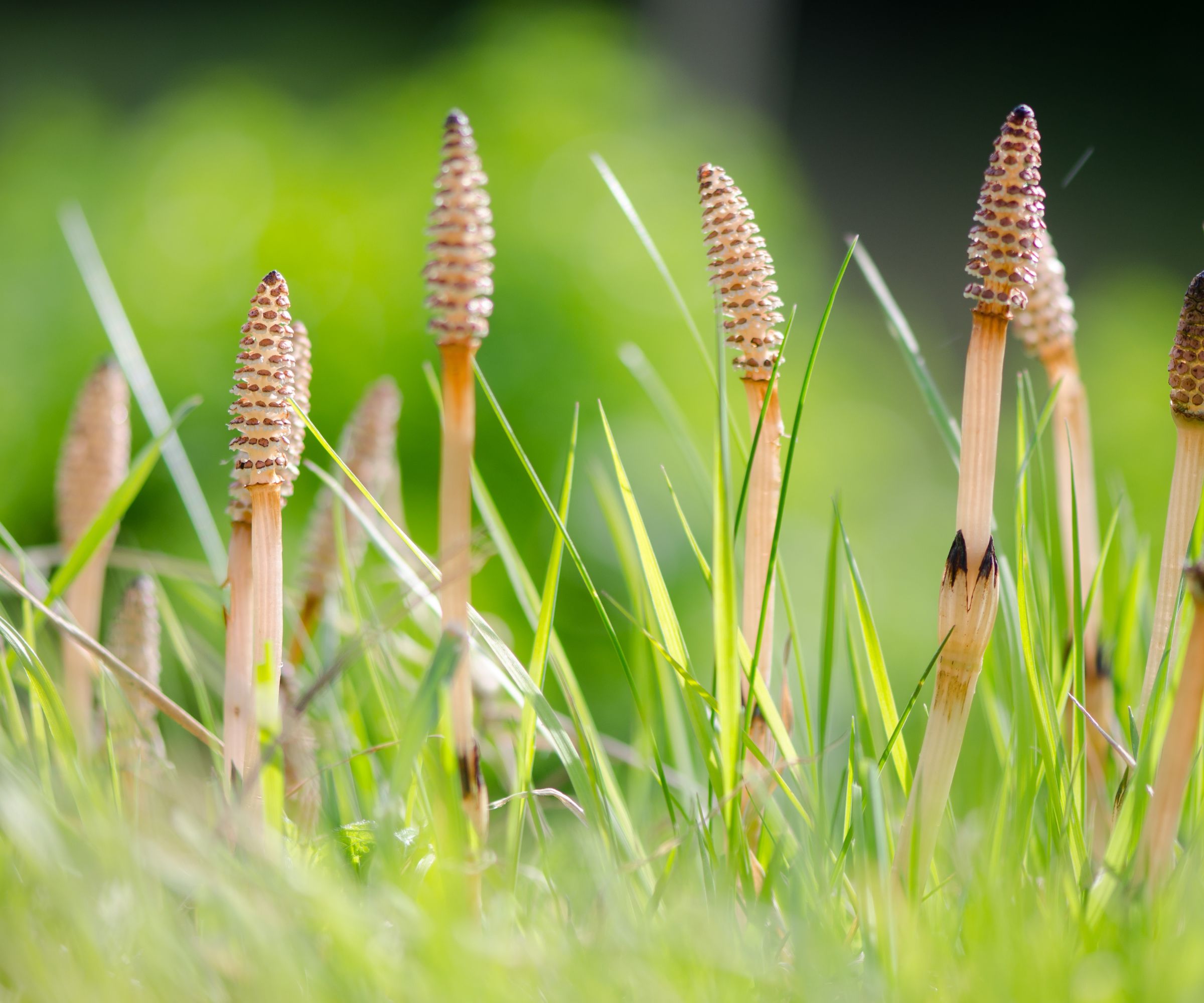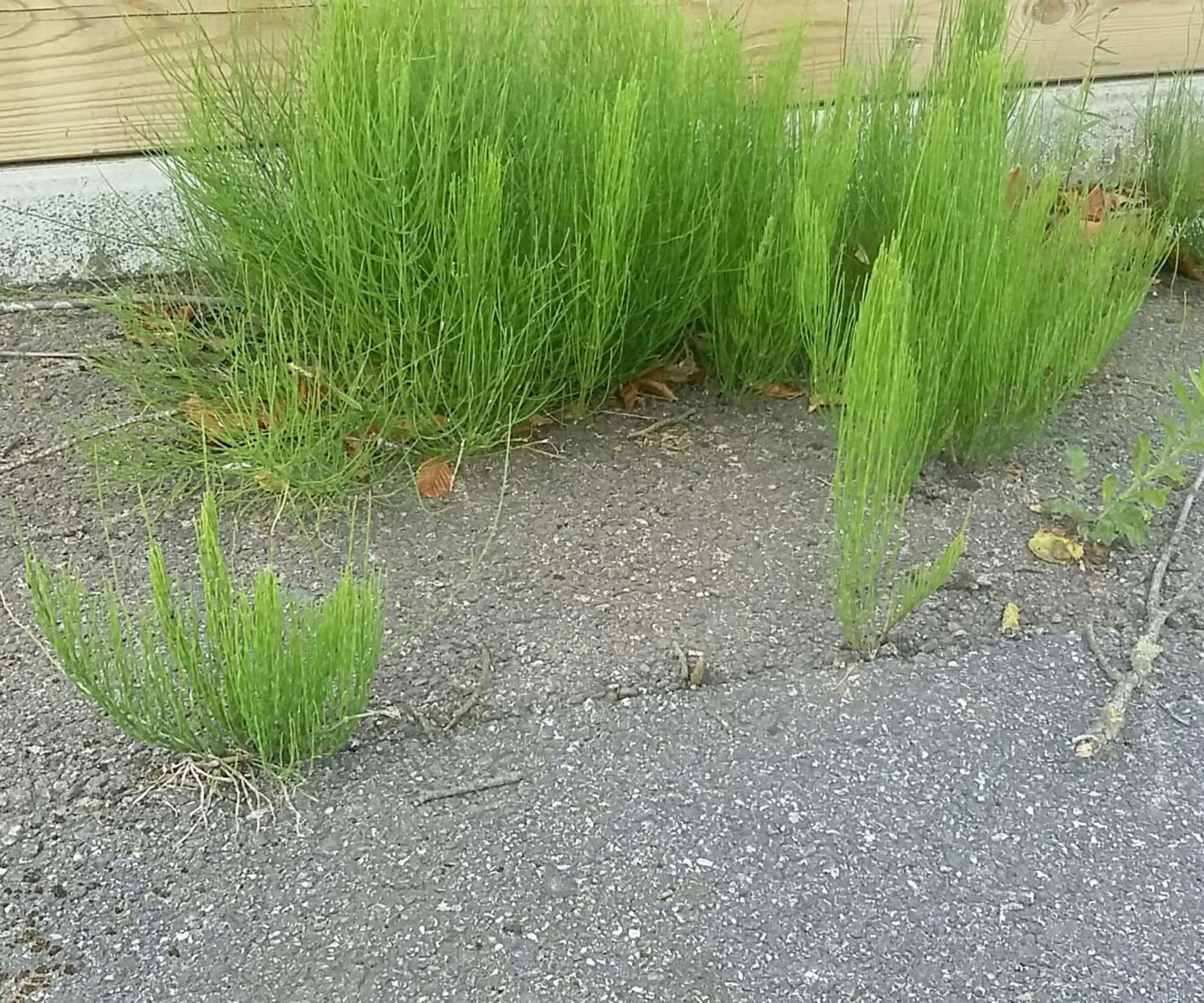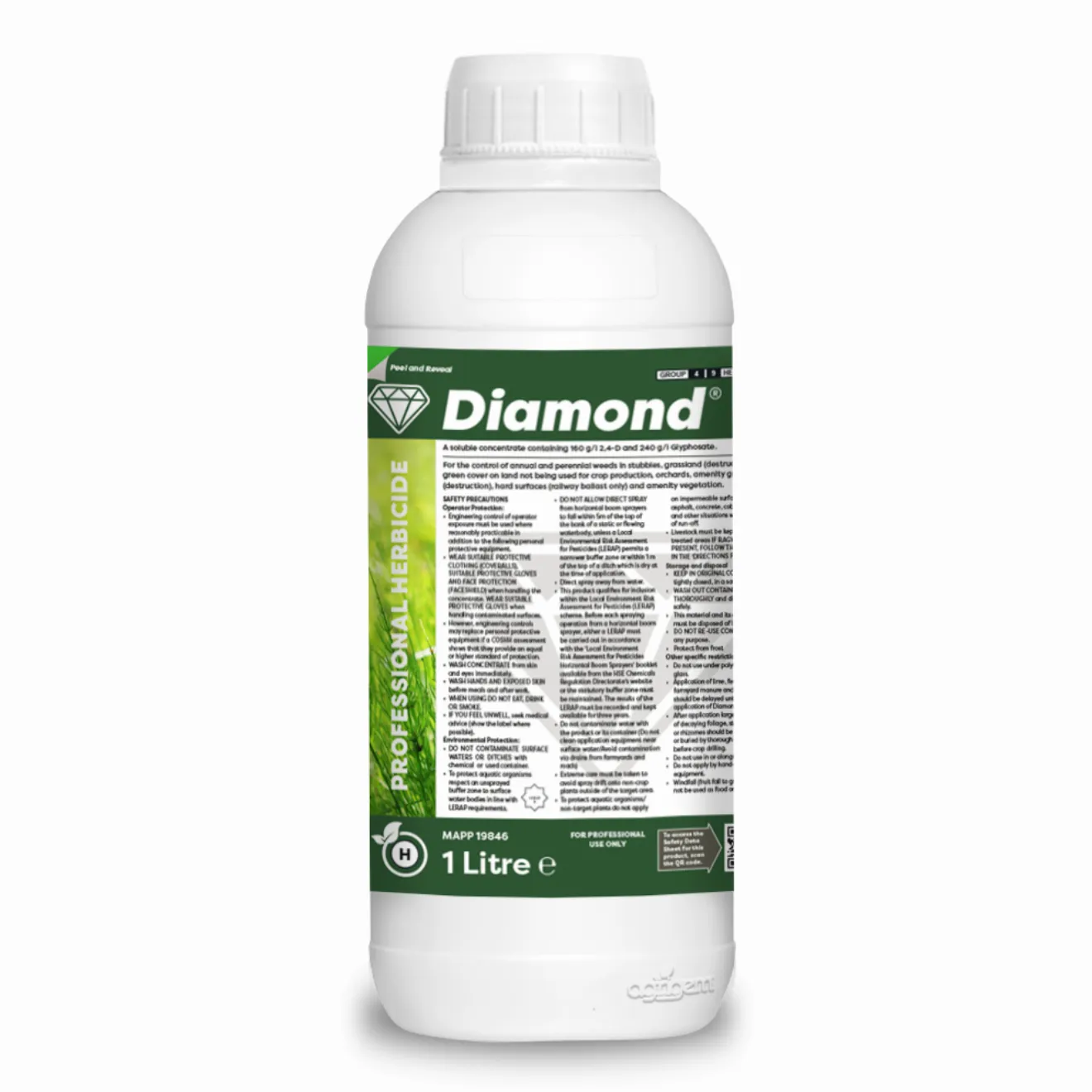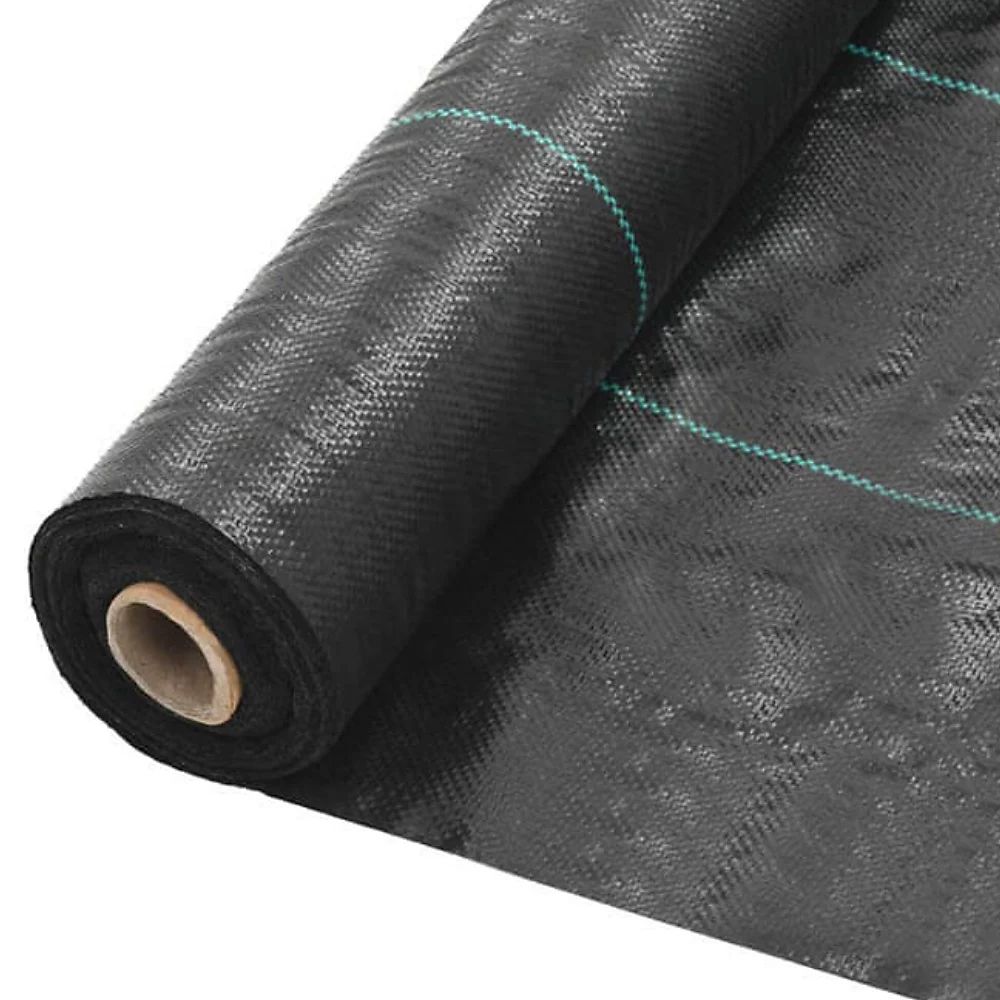How to get rid of horsetail weeds in your garden — and stop them from coming back
Struggling with horsetail weeds? Discover expert advice on how to identity them in your garden and keep these stubborn invaders under control

If you’ve spotted strange, wiry stems sprouting up in your garden borders or poking through your patio paving, you may be dealing with horsetail weeds. Known for being one of the most stubborn garden invaders, they can quickly become a nuisance if left unchecked, which is why many homeowners search for advice on how to get rid of them, and even how to kill weeds like this for good.
This prehistoric plant has been around since before the dinosaurs, and its resilience is exactly what makes it so difficult to control. Horsetail thrives in compacted or poorly drained soil, spreading underground through a tough web of rhizomes that can stretch far deeper than most weeds. The worst part? Even if you pull it up, it tends to reappear time and again.
Thankfully, while eradicating horsetail completely requires a lot of patience, there are simple ways to identify it, manage it, and prevent it from interfering with your garden. We asked experts to explain what horsetail weeds look like, why they’re so persistent, and most importantly, how to keep them firmly under control
How to get rid of horsetail weeds in your garden
"Horsetail is one of the toughest weeds to eradicate," explains Trent Brown, landscape specialist and founder of Ground Break Design. "It involves a multi-pronged approach, usually over multiple seasons, and you have to stay consistent with it."
The good news is that with patience – or even a touch of clever garden design – you can stop horsetail from dominating your space and bring it back under control.

Trent is the Founder and Principal Designer of Ground Break Design, a landscape design firm based in Canada, and author of the Amazon Bestseller "Taking Your Yard from Overwhelm to Oasis", which takes homeowners through a step-by-step process to create a landscape they love. Trent has been working in the landscape industry for over 15 years.
Identifying horsetail weeds

Before you can begin tackling horsetail, it’s important to know exactly what you’re looking for. The appearance of these weeds can change as the seasons shift, which is why it often confuses homeowners.
Chris Bonnett, founder of Gardening Express, explains: “Horsetail is a perennial fern that is actually one of the oldest plants you’ll ever find in a garden. In spring, it produces two very different types of growth. The first appears in early spring as short, pale brown shoots, about 30cm tall, topped with cone-like tips. A few weeks later, these give way to the familiar green summer growth. Its upright stems with fine, needle-like branches could easily be mistaken for a cluster of miniature Christmas trees.”
Bring your dream home to life with expert advice, how to guides and design inspiration. Sign up for our newsletter and get two free tickets to a Homebuilding & Renovating Show near you.
Trent Brown adds that by late spring or early summer it takes on its most recognisable form: “It almost looks like an asparagus shoot with a cone-shaped brush on the end. If you see a plant that looks like a cross between bamboo and a pipe cleaner, you’re probably looking at horsetail."
You’ll typically find horsetail thriving in damp, compacted, or poorly drained soil. It’s hardy enough to grow almost anywhere – from garden beds to patios, paving and even waste ground – which is why it so often catches people off guard.

Chris has been in the horticulture industry for over 20 years. As a teenager, he found a way to merge his love of the outdoors with the power of the internet, creating a business that brought carefully cultivated plants to homes across the UK and Europe.
Why is horsetail weed so difficult to get rid of in your garden?
Part of the frustration with horsetail is that it doesn’t behave like most common garden weeds. Unlike plants that spread mainly by seed, horsetail’s strength lies in its ability to regenerate underground. Chris Bonnett explains: “Its underground root system is what makes horsetail so tricky. Instead of typical roots, it spreads by deep, creeping rhizomes and tubers that can reach several feet down and stretch across boundaries. This means it can pop up from neighbouring gardens and will often reappear even if you try to dig it out, as even tiny fragments of rhizome can regenerate.”
Adding to the challenge, horsetail has natural defences above ground too. As Trent Brown points out: “Horsetail has a waxy surface that can resist some herbicides and makes it tough for sprays to penetrate. It’s one of the longest surviving plants, we’re talking hundreds of millions of years, so it has evolved to be incredibly resilient.”
It’s this combination of deep-set rhizomes and herbicide resistance that makes horsetail one of the most persistent weeds you’ll encounter, and why managing it takes a strategic, long-term approach.
The most effective way to get rid of horsetail weeds
While completely eradicating horsetail is rarely realistic, there are reliable ways to weaken it and keep it under control:
1. Cut back new growth regularly
One of the simplest but most effective tactics is to cut or pull up new shoots as soon as they appear. This prevents them from photosynthesising and gradually starves the rhizomes underground. Chris Bonnett explains: “The key is weakening the plant over time. Regularly cutting or pulling up new shoots as soon as they appear will stop them from photosynthesising and gradually deplete the energy stored in the underground rhizomes. It’s important to do this consistently through the growing season.”
2. Dig out the rhizomes (where possible)
In smaller infestations, you can dig down and physically remove as much of the rhizome network as possible. This is painstaking work, as even small fragments can regrow, but it helps to reduce the plant’s reserves and spread.
3. Block light with barriers or mulch
For stubborn patches, covering the area with a light-blocking membrane or a thick mulch can help suppress regrowth. Without access to light, the shoots can’t sustain themselves and the rhizomes slowly weaken.
Trent Brown notes that combining approaches is often most effective: “There’s no quick fix unfortunately, but a multi-pronged approach works best. Loosening compacted areas, adding lime, and then using barrier methods like landscape fabric or thick cardboard plus mulch can cut off light. For shoots that still pop through, consistent cutting or pulling is key. Over time, maybe 2-3 seasons, the plant weakens."
4. Consider chemical weedkillers (with caution)
Herbicides can be used, but horsetail’s waxy coating makes them less effective. They typically require repeated applications, applied to actively growing summer shoots for best results.
Jennifer Holmes, head of business development at Environment Controls, explains: "Herbicide application at the right time of the year, and applied by trained professionals is an effective method of control. To use an approved herbicide to treat Horsetail requires specialist knowledge – preferably by a BASIS approved advisor – and treatment should involve multiple applications at the optimum time of year."

Jennifer is an environmental control specialist and content creator who specialises in Japanese knotweed and other invasive species of weed.
How to stop it from returning

Once you’ve managed to get horsetail under control, it pays to keep a close eye on problem areas and improve the growing conditions to prevent the rhizomes from regenerating. Here's what the experts recommend:
Improve your soil
Horsetail thrives in compacted, poorly drained ground. By regularly digging over soil and working in organic matter, you’ll improve its structure and make it less favourable for regrowth.
Plant densely to outcompete weeds
One of the most natural ways to reduce the chance of horsetail returning is to plant densely, so there’s less bare soil for it to exploit. Trent Brown also suggests keeping soil well-drained and to avoid overwatering. "Plant dense groundcovers, shrubs, or turfgrass so there’s no bare ground for horsetail to exploit. For most weeds, a healthy, full garden or lawn is going to be the best competitor.”
Watch your boundaries
Because horsetail spreads underground, shoots can easily creep in from next door or from wild land nearby. Root barriers or edging can help limit its spread, though they’re unlikely to block it entirely. Regular monitoring is the best way to catch any stray shoots before they re-establish.
3 products for tackling horsetail weeds
Consider embracing horsetail weeds
For some homeowners, the effort of chasing horsetail across every corner of the garden may feel like a losing battle. In certain cases, it can make sense to accept it rather than fight it.
“If horsetail is confined to a corner of the garden or growing beneath larger shrubs and trees where it isn’t causing much harm, it may be easier to accept it as part of the landscape," Chris Bonnett concedes. "It doesn’t damage structures or hard landscaping, and some people even value it as a nod to its prehistoric history.”
Trent Brown takes a similar point of view, noting: “With ornamental grasses and perennials planted around it, horsetail isn’t the worst-looking plant in the world. In highly infested areas, complete eradication is nearly impossible, but control and coexistence can be a realistic balance.”
In other words, if horsetail isn’t threatening your vegetable patch or delicate borders, it may be worth making peace with it, especially as garden trends in 2026 are leaning more towards naturalistic planting.
FAQs
Can horsetail weeds damage buildings?
Yes. As Jennifer Holmes explains, "field horsetail can pose a real risk to construction and infrastructure if it’s left unmanaged. Its deep-rooted rhizomes are capable of compromising foundations, drainage systems and even pushing back through cracks in concrete. This makes it more than just a nuisance for homeowners, on development sites, it can lead to delays, extra costs and even reduced land value if not dealt with early."
Does weedkiller work on horsetail?
Standard herbicides are often ineffective against horsetail because of its waxy surface and deep rhizome system. However, Jennifer Holmes advises that professional herbicide application, using products such as glyphosate at the correct time of year, can work as part of a management plan.
Roundup Tree Stump and Rootkiller from B&Q is a powerful, concentrated weedkiller designed to kill tree stumps, invasive weeds, and deep-rooted perennials right down to the root.
When should you call in professional help?
If you suspect a serious infestation, particularly on building plots, hard landscaping, or areas where foundations may be at risk, it’s best to seek expert advice straight away. Jennifer Holmes stresses that early detection is vital: “Identifying invasive species before works commence allows for effective planning and treatment. If it is identified later down the line there are still remedial work options to resolve the issues.”
Looking for more ways to tackle tricky garden invaders? Take a look at our guide on how to remove weeds from gravel for driveways and paths, or find out how to kill weeds in grass without damaging your lawn

Gabriella is an interiors journalist and has a wealth of experience creating interiors and renovation content. She was Homebuilding & Renovating's former Assistant Editor as well as the former Head of Solved at sister brand Homes & Gardens, where she wrote and edited content addressing key renovation, DIY and interior questions.
She’s spent the past decade crafting copy for interiors publications, award-winning architects, and leading UK homeware brands. She also served as the Content Manager for the ethical homeware brand Nkuku.
Gabriella is a DIY enthusiast and a lover of all things interior design. She has a particular passion for historic buildings and listed properties, and she is currently in the process of renovating a Grade II-listed Victorian coach house in the West Country.



